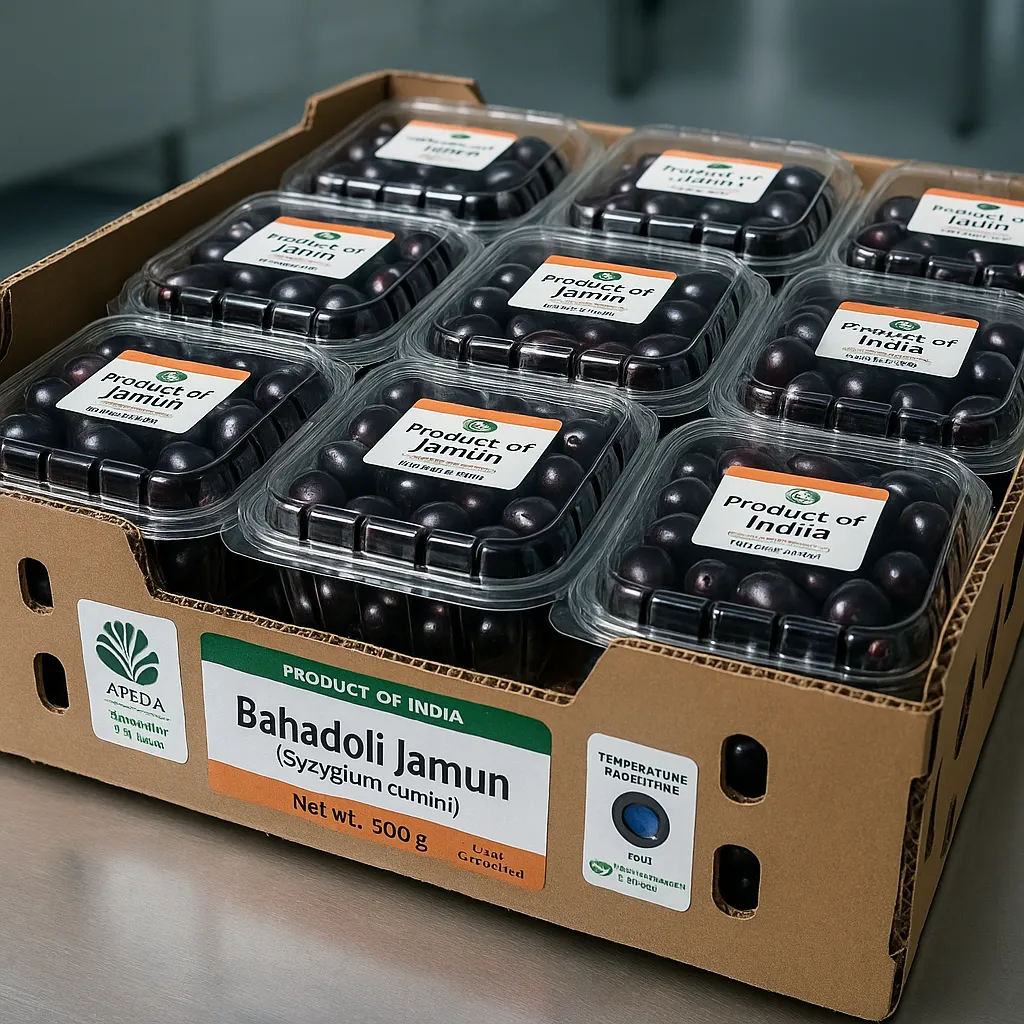
Jamun Exports 2025: A Data-Backed Playbook for Indian MSMEs
Jamun Exports 2025: A Data-Backed Playbook for Indian MSMEs
India already grows more jamun than almost any other country but sells only a fraction of it overseas. If you run or advise a small or mid-sized export business, this article gives clear, evidence-based answers to the four questions you are most likely to ask before putting money into the purple fruit.
1. Why Jamun?
Abundant supply. India harvests roughly 2.1 million tonnes a year—about fifteen percent of world output—yet less than five percent leaves the country.
Scientific demand. Global buyers are looking for low-glycaemic, antioxidant fruit. Jamun seed extract is already popular with nutraceutical brands.
Origin story. The Bahadoli Jamun Geographical Indication, awarded in 2024, lets you sell provenance and quality, not just commodity fruit.
Result: You start with plenty of raw material, a proven health claim and a ready-made marketing hook.
Click the image below to claim your RSM Exports Success Kit to know how much you can earn in Exports Business within 6 months!

2. Why Processed Formats Instead of Fresh?
Fresh jamun collapses within forty-eight hours unless it is carefully chilled and rushed by air. Those costs kill margin. Processed formats fix the problem.

*Typical ex-works price per kg.
Processing gives you longer sales windows, container-scale shipping and two-to-four times the revenue per kilo.
3. Why the United States, Canada and the UAE First?
Established pull. Last season the United States bought forty-two percent of India’s jamun seed powder. Canadian distributors follow U.S. health trends.
No tariff spikes. Jamun falls under HS 0811 (frozen) or 1211 (powder) with straightforward phytosanitary rules and zero or low duty in these markets.
Efficient logistics. Chennai–Jebel Ali takes about six days door to door, with competitive back-haul reefer rates.
Start where the demand signals are loudest and the paperwork is predictable.
4. Why Move in the 2025 Season?
Cheaper fruit. The monsoon is arriving later; prices dip when the bumper crop meets fewer local buyers.
Early trade-fair slots. APEDA’s Q3 virtual fairs give first movers prime B2B meetings.
Extra rebate. The RoDTEP refund on frozen jamun pulp (HS 0811) rose by half a percentage point this year—margin straight to your bottom line.
Waiting costs you both price advantage and market attention.
Operational Checklist
Spec your product. Agree minimum Brix 12 ° and deep purple-black skin for the raw fruit.
Lock compliance. Renew FSSAI licence; if you aim at U.S. buyers, file FDA FCE/SID for pulp lines.
Reserve cold chain. Book blast-freezer hours and 20-foot reefers at –20 °C well ahead of harvest.
File correctly. Use HS 0811 90 for frozen, 1211 90 for powder to avoid detention.
Market with proof. Share the GI story, lab results and shipment photos on LinkedIn or through direct mail before quoting FOB Chennai.
Conclusion
Jamun is no longer a monsoon treat; it is a real export line with ten-crore potential for any disciplined Indian MSME. The path is clear: abundant supply, proven health demand, profitable processed formats, receptive high-value markets and an immediate timing edge. If you are prepared to follow the data and run a tight operation, the purple fruit can pay off quickly and sustainably.
Ready to move or need a deeper dive into any step? Reach out, and let’s build the next Indian export success story.